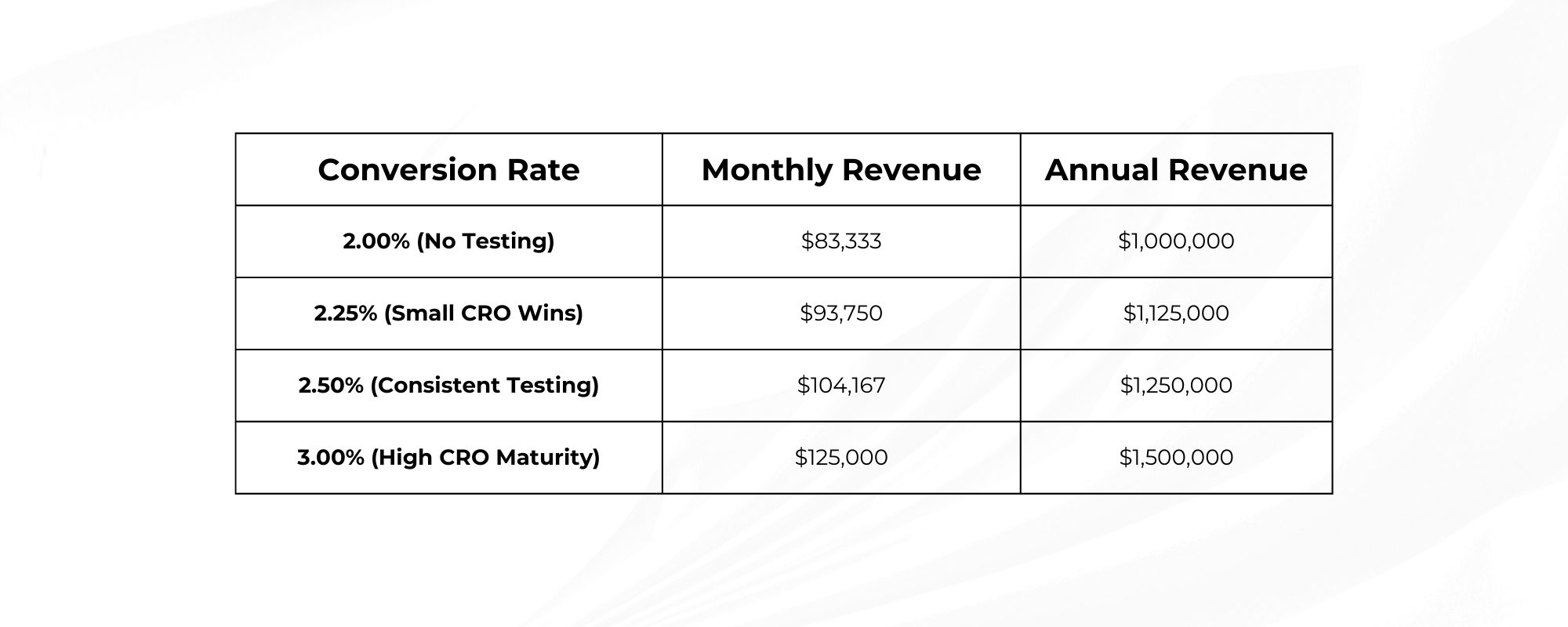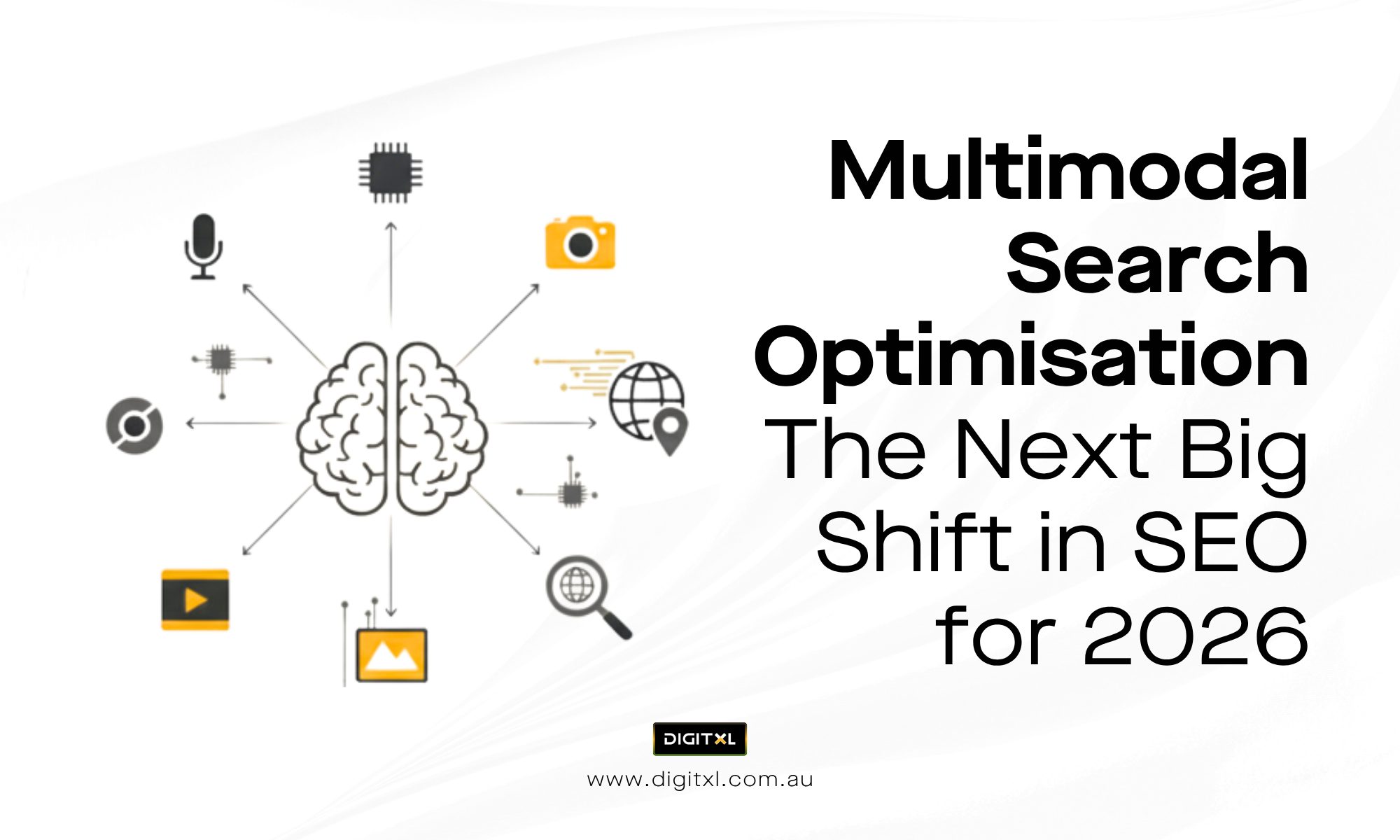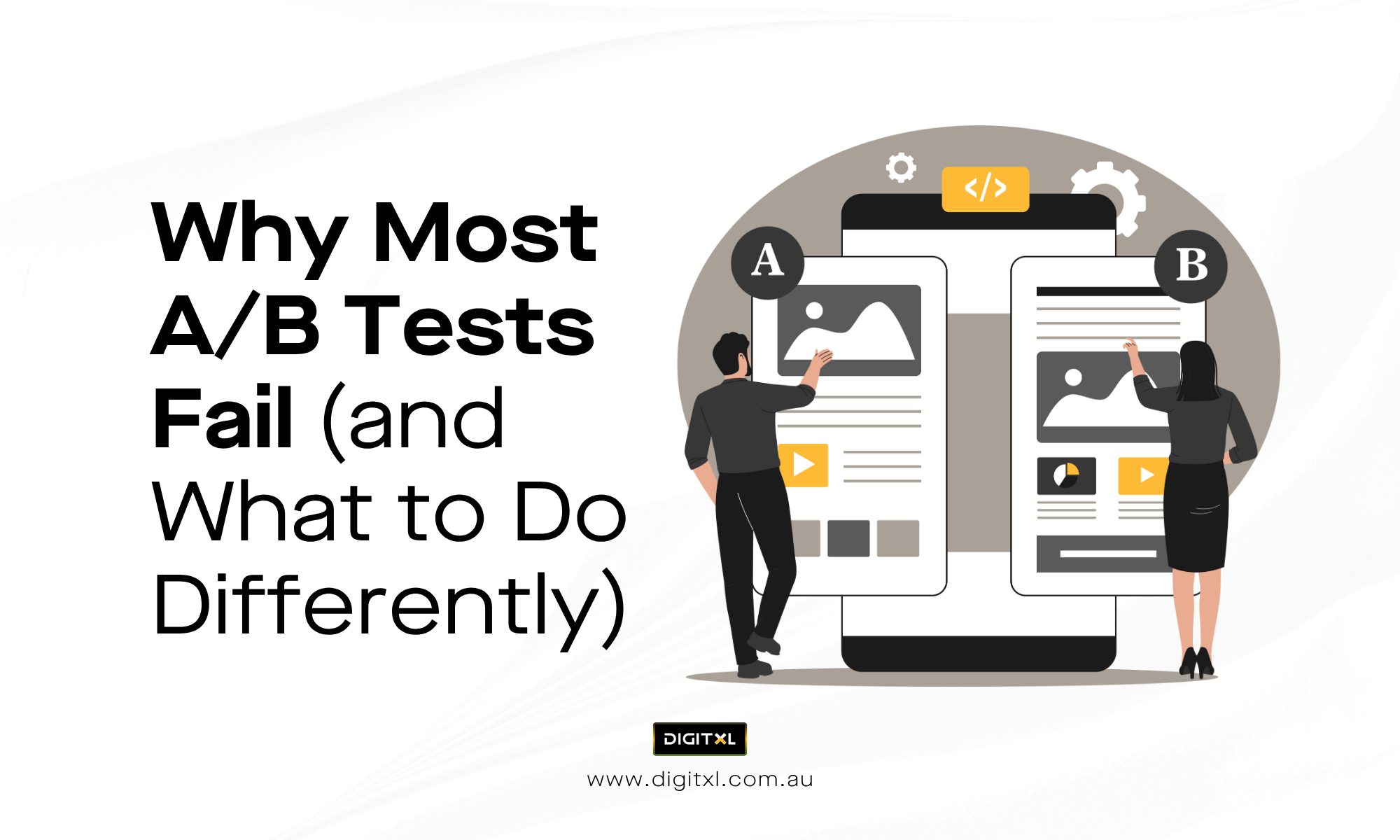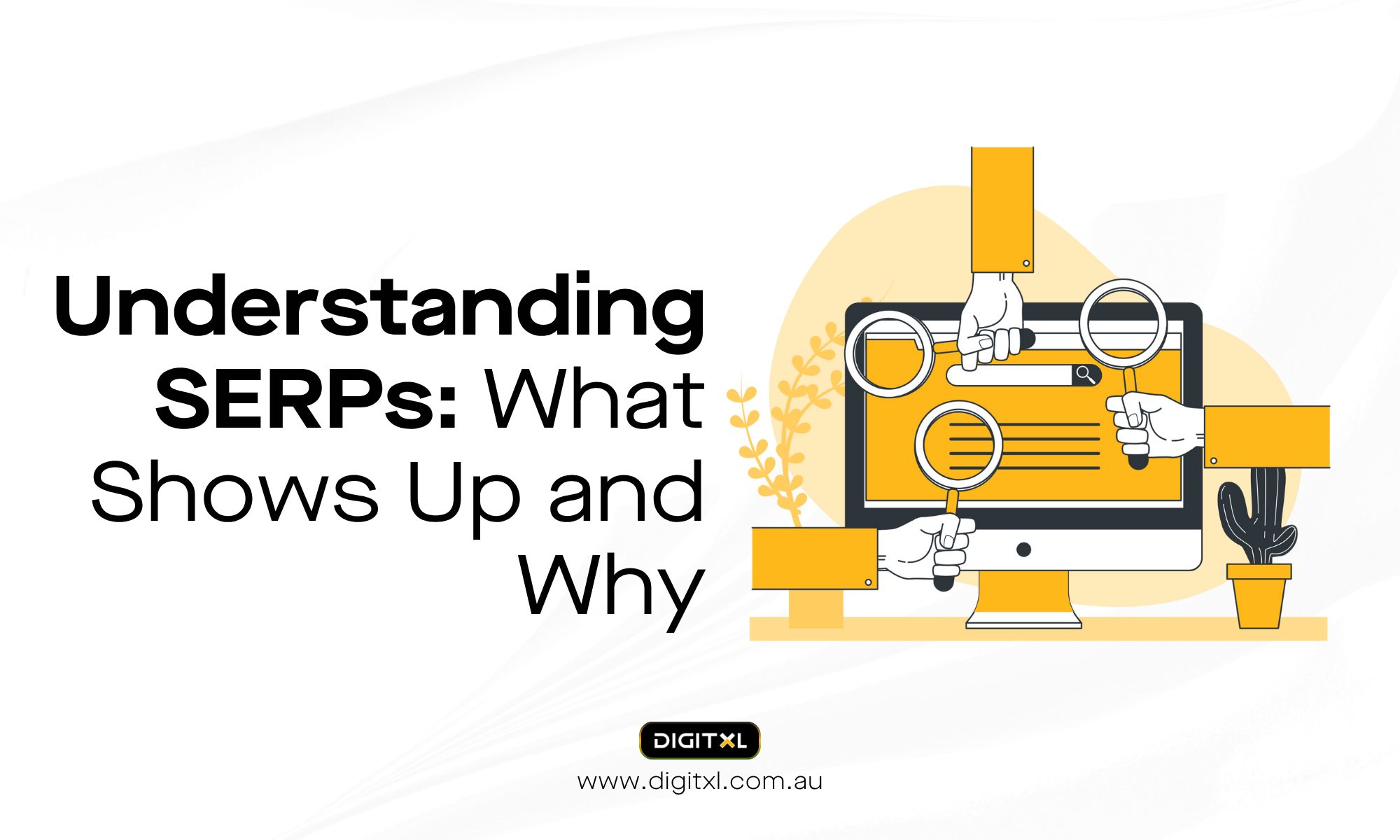- CRO
What Happens When E-commerce Brands Ignore A/B Testing for Conversion Rate Optimisation?
28 Feb 2025
E-commerce businesses spend thousands (if not millions) of dollars on paid ads, influencer marketing, and social media campaigns.
Whether you manage everything in-house or work with a CRO agency, what happens on your website after the click ultimately decides your growth.
1. A/B Testing: The Difference Between Stagnation and Scalable Growth
E-commerce businesses spend thousands (if not millions) of dollars on paid ads, influencer marketing, and social media campaigns.
But what happens when all that traffic lands on a website that doesn’t convert efficiently?

- Money is wasted.
- Ad costs skyrocket.
- Revenue potential is lost.
The harsh truth is that most e-commerce brands don’t need more traffic—they need better conversion rates.
Yet, many brands ignore eCommerce A/B testing, relying instead on gut instinct, intuition, and outdated best practices. This approach cripples long-term growth.

1.2 What Are You Missing Out on Without A/B Testing?
- Wasted marketing budget: Sending traffic to an unoptimised site means higher bounce rates, lower engagement, and poor conversion rates.
- Lower revenue per visitor: Every lost conversion is lost revenue. Even a 0.5% increase in conversion rate can add hundreds of thousands in annual revenue.
- Uninformed decision-making: Making website changes without data is like throwing darts blindfolded—some might land, but most will miss.
- Falling behind competitors: The fastest-growing brands—like Nike, Sephora, and Bunnings—run hundreds of A/B tests per year. If you’re not testing, you’re losing market share.
At DIGITXL, we help brands implement structured A/B testing for conversion rate optimisation to turn guesswork into growth.

1.3 A 1% Monthly Increase = 12.7% Yearly Growth (Here's Why)
https://www.digitxl.com.au/cro/Many brands fall for misleading claims like:
💡 “Improve your conversions by 40% overnight!”
💡 “One simple tweak to 10x your revenue!”
In reality, sustainable CRO (Conversion Rate Optimisation) isn’t about overnight success—it’s about making small, consistent improvements that add up over time.
A study by Harvard Business Review found that the average A/B test results in a 1–3% uplift. But the real power isn’t in a single test—it’s in testing continuously.
📈 A 1% increase in conversions per month doesn’t just add up—it compounds.
📈 Instead of 12%, it leads to 12.7% growth over a year.
Here’s why:
Each month’s 1% improvement is applied to the new, higher number from the previous month. It’s like rolling a snowball down a hill—it starts small, but as it keeps rolling, it picks up more and more snow.
For example:
- If you start with 100 conversions, a 1% increase means you now have 101 conversions.
- The next month, you grow 1% of 101, not 100—giving you 102.01 conversions.
- By the 12th month, this compounding effect results in 112.7 conversions, or 12.7% total growth, instead of just 12%.
This small but powerful concept is the same principle used in compound interest—where small, steady gains create exponential results over time.
📈 If you increase by 2% per month, your yearly growth isn’t 24%—it’s 26.8%.
Ignoring eCommerce A/B testing mistakes can leave a big chunk of revenue on the table—and the brands that test consistently scale faster.

2. Real Example: How a 0.5% Uplift Drove $540K in Additional Revenue
One of our clients, an e-commerce brand, struggled with cart abandonment.
We hypothesised that adding express checkout buttons (Apple Pay, Google Pay, Shop Pay) would reduce friction.
- Before testing: Conversion rate = 1.92%
- After testing: Conversion rate = 2.42%
- Result: A 0.5% increase in conversions.
That might seem small, but let’s break it down:
Average Order Value: $120
Monthly Visitors: 150,000
Additional revenue per month: $45,000
Annual revenue growth: $540,000
This wasn’t a guess—it was a data-backed change that led to a real financial impact.

3. Brands That Scale Fastest = Brands That Test the Most
The most successful brands don’t just test occasionally—they bake testing into their growth strategy.
Case Study: Netflix’s A/B Testing Culture
Netflix runs hundreds of A/B tests per year. They test everything from:
- Thumbnail images (which influence watch-time by up to 20%).
- Subscription pricing models (which directly impact user retention).
- Personalised homepage layouts (leading to a 30% increase in engagement).
Their relentless experimentation has helped them outperform competitors like Blockbuster, Hulu, and HBO Max.
The lesson?
More testing = faster learning = greater competitive advantage.
If your brand isn’t testing consistently, your competitors are—and they’re winning.
4. What Should a CRO & A/B Testing Strategy Look Like?
A/B testing isn’t about random experiments—it’s a structured, data-driven process.
1. Identify Revenue Leaks
Before testing, we conduct deep-dive analytics to find where customers are dropping off.
- Cart Abandonment (Avg: 68%) – Are customers dropping off at checkout?
- Mobile Experience Issues – Is your mobile site optimised for speed & usability?
- Homepage Bounce Rates (Avg: 40-60%) – Are visitors leaving before engaging?
2. Test What Actually Moves the Needle
We prioritise tests that have the highest potential impact, such as:
✅ Checkout optimisations (reducing friction)
✅ Pricing & discount visibility (driving urgency)
✅ Product page enhancements (clarity, trust signals, reviews)
✅ CTA button design, text, and placement
3. Measure, Learn, Scale
Each test is backed by data-driven decision-making, so that only the best-performing changes get rolled out.
Win? Scale it site-wide.
Lose? Learn & iterate.
5. How Much Are You Losing by NOT Testing?
Let’s assume your store makes $1,000,000 per year and has a conversion rate of 2%.
Here’s what happens when you ignore ecommerce A/B testing vs. optimise consistently:
Even a 0.25% increase could drive an extra $125,000 per year.
What’s the cost of not testing? Hundreds of thousands in lost revenue.

6. The Best Way to Implement CRO & A/B Testing
You have three options:
Option 1: Do It Yourself
✅ Low cost
❌ Steep learning curve
❌ Slower results
Option 2: Build an In-House CRO Team
✅ Full control
❌ Expensive ($250K+ per year)
❌ Hard to find top talent
Option 3: Partner with DIGITXL (Best for Fast Growth)
✅ Results in months, not years
✅ Fraction of the cost of an in-house team
✅ Proven frameworks that scale
At DIGITXL, we specialise in high-impact CRO strategies that deliver:
- More revenue per visitor
- Lower customer acquisition costs
- Faster, scalable growth
If you want to see how CRO and A/B testing can improve your growth phase, let’s chat!





